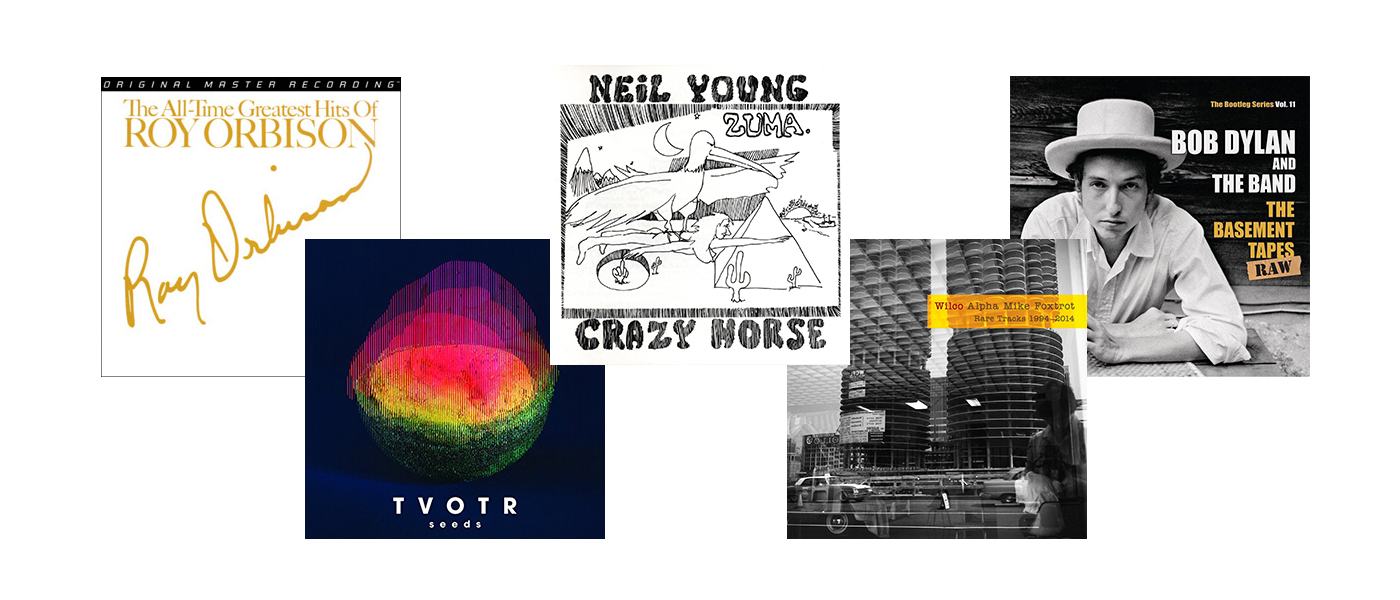Neil Young “Tonight’s The Night” Reprise Records
- Performance:

- Sound:

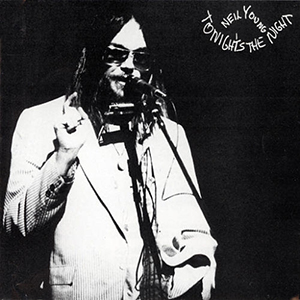
When I heard that Neil Young was releasing some of his mid-’70’s material in a boxed set for Record Store Day, I was most excited to have a pristine copy of Tonight’s The Night. If I could only take one Neil record with me, it would be this one. Maybe. We’ve looked at a couple of the other titles in the box here already, and I’ve already admitted that I got a little ahead of myself in the Time Fades Away review. I’m doubling down on that assertion, now.
I’ll start by saying that this record sounds fine. Certainly better than my original if only because there is less surface noise to contend with. My original has a weird honking sound that comes out of nowhere once at the very beginning of the title track opener. And I’m not using “honking” colloquially to suggest “big.” I mean to say that a damn car horn comes screaming at you from your blind spot to shock your socks off. It’s jarring and off-putting, but not so much as plunking down $160 for a box of four records only to discover that your copy of On The Beach is full-on defective. And I know this is going to blow some minds, but Warner Brothers has not responded to my request for reconciliation on this matter. Normally, a behemoth, faceless corporation would bend over backwards to accommodate the clientele that means so little to these types of outfits, but everyone must be too busy lighting their cigars with flaming hundred dollar bills over there to get back to me now. Anyway, while this record has less surface noise than my original, it still has surface noise. More in line with what I would expect from United Record Pressing than from Pallas. Never mind, it’s nowhere near as bad as what I’ve heard out of United recently. (To follow up on last month’s issue with Jack White’s Vault package, I will tell the reader that they replaced my defective copy with great haste. And with another defective copy. I’m ranting. It’s almost as if Lester Bangs is rattling around in the chambers of my mind. Back to the task… ) This recording is never going to sound clean. It is, by its very nature, the opposite of polished. It’s shockingly human which is what so many of us look to Neil Young for in the first place. But Everybody Knows This Is Nowhere is not exactly sterile either and Neil’s Archive version of that one is so alive and physical that it’s almost intimidating. I don’t get that from this version of Tonight’s The Night. Maybe I was expecting too much. Maybe I’d feel differently with a quieter pressing, and maybe I’m a spiteful bastard. There’s some warmth to this version. Some rounder edges and a springiness that helps some of the chorus effects on the electric guitars jump out at you. The vocals seem a little clearer to me too as you can really hear Ol’ Neil struggling with some of the high notes in “Mellow My Mind” and “Tired Eyes.” Of course, the content is relentless especially on side two. (But also on side one.) Original copies are expensive and hard to find in great shape. This might be as good as it gets. Might as well jump.
I’ve had a hard time with some vinyl pressings lately. It’s starting to wear on me. But I’m not losing faith. There are some companies doing some magical things in this era of our Cultural Nadir. I’ll tell you about them too. I promise.
Duke Ellington and his Orchestra “Masterpieces by Ellington” Analogue Productions
- Performance:

- Sound:

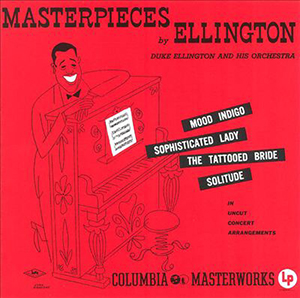
Know what you can do when you’re feeling a little negative about a few crappy record buying experiences that you’ve had in the last couple of months? Pick a title by the folks at Analogue Productions and play it. Clean it up first like you would any record that you just bought, new or old. Then, sit in your listening chair and let the healing begin. That’s what I did. It helps when the title being reissued is Masterpieces by Ellington as performed by the Duke and his Orchestra. Good night, America, this stuff is good. And not a moment too soon. Whew!
This title is eaten up with historical significance as well as sonic awesomeness. This was the Duke’s first long-player, you understand. Until this one, in 1951, his work had always been pressed on 78 rpm records which wouldn’t accommodate the entire length of his compositions. In effect, folks were hearing what would count for a radio edit today. (Do they still actually do radio edits for anything other than foul language? I mean, does anyone really care about the length of a song anymore? Do they play songs on the radio anymore? Who knows?) So Masterpieces gave Ellington his first shot at stretching out. Luxuriating in the brilliance of his concert arrangements. On record. And, to the benefit of all human kind, it sounds like these tapes were frozen for posterity right alongside Walt Disney. The atmosphere swirling around “Mood Indigo” would have been worth the price of the ticket on its own with a muted horn solo that literally (and I don’t abuse the word “literally”) sounds like the player is talking to you. It wobbles and swoons, and I swear you can hear some “yeah, yeah, yeahs” at the end of it. There are some vocals here and there courtesy of “Yvonne,” and I would probably prefer all instrumentals, but the atmosphere certainly doesn’t suffer from her presence. If you shut your eyes and hold your head just right, you can see all of the sophisticated women working the ballroom. Pale skin, dark hair, red lips, and black dresses. (Long cigarette holders too, but in this fantasy the smokes don’t smell like death, they smell like strawberries.) The liner notes told me that all of these songs except “The Tattooed Bride” dated from the early ’30’s and was recorded just prior to significant “changes in orchestral personnel.” I have a few Ellington records in my collection now, and this title ranks right up there with the best of them for clarity and detail. Ellington Indigos by Impex is another. Ellington Uptown by Speakers Corner is great too, but in a grittier way. Masterpieces is a record to build a collection around. Or to fall in love to, if you’re into that kind of thing. Wendell Marshall’s bass is especially lifelike as you almost hear it from the inside out. I mean, you can feel the construction of the instrument itself. You can feel the vibrations of the brass section’s reeds against the players’ lips. In short, if you don’t like this version of this recording, I don’t know what you’d like. Tripping old ladies as they cross the street, maybe.
Some pressings are more perfect than others are perfect, and this one falls just short of sublime. A couple of crackles here and there, but they’re sparse. They certainly don’t define the listening experience, and they seem to get a little better with each cleaning. I’m all in on this one. I’d get it now while you still can. A proverbial oasis in a recent desert of despair. Ahoy!
The Grateful Dead “Workingman’s Dead” Mobile Fidelity Sound Lab
- Performance:

- Sound:

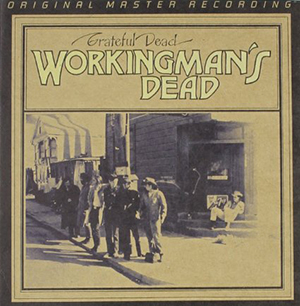
I wouldn’t be surprised to learn that some readers might get tired of hearing me extol the virtues of the work that the folks at Mobile Fidelity Sound Lab do. I’m also sensitive to the fact that some audiophiles don’t appreciate MoFi at all. I’m not privy to their reasoning, but I suspect that it may be because the company makes no pretense towards faithful reproduction of original works. There is a “sonic stamp” associated with their product. You know what’s not associated with their product? Poor craftsmanship. And I’m not too convinced about the “sonic stamp” anymore either. There are differences between their reissues and the original works, to be sure. But they don’t seem nearly as “soft” to me as they used to. I used to feel like they couldn’t get the job done on the gnarly Raunchy and Roll records, but their Allman Brothers series cured me of that notion. And they did me a serious solid with their Grateful Dead titles. As we mentioned last month, I set out to find a few Dead records that I could play in their entirety without pulling my ears off a few years back. MoFi’s version of Workingman’s Dead completed that project for me. What a long strange trip, blah, blah, blah.
It might be worth mentioning that I don’t think that this Workingman’s is quite as transcendent as MoFi’s American Beauty. There’s just a slight degree of separation between my ears and the music, and I can’t quite pin down a reason for it. It’s not there on Beauty, I can tell you that much. I think it has to do with the Workingman’s bass. It’s a little more prominent than I’d expect. Makes things a little muddier, maybe. It might also be worth mentioning that I am totally splitting hairs here. The bass is far from intrusive and is not at all disagreeable. In fact, I stopped noticing it after the first couple of listens. Still, something through me off at first. Made me take the American Beauty’s side over the Workingman’s. Sonically speaking, anyway. As far as the work goes, I’m not so sure. I’d forgotten why I liked Workingman’s so much in the first place. I’ve never owned a copy whereas I’ve had an original Beauty for a while. But, man, the songs on Workingman’s are tough to beat when it comes to the Grateful damn Dead. Had this record been presented in its original format, “High Time,” “Dire Wolf,” and “New Speedway Boogie” would have closed out the first side in succession. As it is, they’re split up over the course of two sides cut at 45 rpm. I’ll frigging take it. Golly, that’s a batch of great American songs. It’s so easy to get distracted by the circus that was built up around this band, the fact that many of their fans felt compelled to dress up like monsters and act like zombies on meth. And a lot of their work sucked too. Consistency was not a priority, it would seem. Or maybe it was just unattainable for whatever reason. But I scared up five titles that do it for me, and four of them were done by MoFi (the two mentioned here along with Live Dead and “Skull and Roses”). Analogue Productions chipped in too (with Reckoning).
There’s no surface noise on this record. None. I know that’s not feasible for every company’s or artist’s budget, but I know we can do better than we have of late. The recent Neil Young debacle may have just been an outlier on the Pallas scatter plot. I have no theories about what’s happening at United Record Pressing, but I know they could do better and that their bands could be more discerning about who they partner with to make records. Folks can quibble with MoFi’s production all day, I reckon, but not with the quality of their discs. I love everything about their work, as a general rule. Consistency is not an issue here.
Widespread Panic “Everyday” Widespread Records
- Performance:

- Sound:

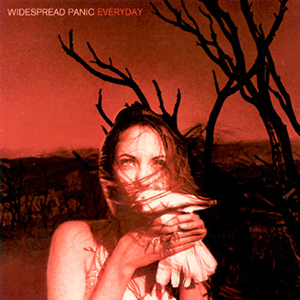
I remember when Widespread Panic released Everyday like it was yester-every-day. I went into a Turtle’s in Gainesville, Georgia, bought a copy for a friend and one for myself on the day it was released and proudly told the cashier that they’d just sold out of the title and that they should order more ASAP. Remember when it meant something to really get behind a band? To feel like you were helping them out by spreading the Gospel and making statements with your money? I felt like I had a dog in the fight. It was the band’s first record with Jojo on keys, and he and I had become friendly. He’d turned me on to R.L. Burnside and Junior Kimbrough. Had taken out his life savings and helped start Fat Possum Records. I remember asking him who the girl was on the cover. He said he didn’t know, that he thought she was some photographer’s girlfriend in Los Angeles. This record was released in 1993. I found out a couple of months ago that the girl is Angelina Jolie. Jojo didn’t care.
The Good: This record has some really groovy songs on it. I think Mikey Houser’s individuality and creativity really stand out on “Pleas,” “Hatfield,” “Better Off,” and “Postcard,” especially. I asked him once if he knew what he was doing with a guitar or if he played by feel exclusively. He assured me that he was clueless about guitar theory, proper technique, etc. I kinda believed him, and I certainly miss his playing and personality. I don’t think the band approaches the level of excitement and intrigue that they were generating onstage nightly at the turn of the century. I’m fine with “different,” but less fine with “lost the magic.” Jojo’s impact on Everyday is immediate and distinct. He’d replaced T. Lavitz who seemed to know too much about technique and theory, who stuck out like a skunk in a rosebush. Jojo was like the confectioner’s sugar on top of the best French toast that you’d ever tasted. Later, his contributions became more structural, but he seemed to be picking his spots on Everyday. Speaking of picking, his work on “Pickin’ Up The Pieces” is lovely. To this day, I get a feeling of excitement at the possibilities of impending great things when I hear Everyday. For the band and for me. That’s why I love it.
The Bad: this recording is flat and lifeless. “One dimensional” would be generous. As a kid, I was blown away by its cleanliness and what I thought of as “clarity” at the time. I was too close and too smitten to notice that it was DOA with regards to dynamics and tone. That was producer Johnny Sandlin’s style. The guy’s been at it for years by then and he may still be now. Clearly, there are folks that like his work. He’s well respected and generally beloved by Southern Rockers, in particular. Bully for him.
The Ugly: this record was pressed at United Record Pressing. Side one is actually passable. Great, really, in comparison to much of their recent work. I was about to call a press conference and announce this wondrous news until I heard side two. URP’s patented “whirring” to start that side segued right into all the noise and pollution that they do so well. Copy all of that on the second disc. The graphics are grainy, and there are actually less liners than were included with the CD. Feels lazy. I needed this one to maintain the completeness of my WSP collection. The casual fan could just as easily pass on it. I would.
Bill Withers “Live at Carnegie Hall” Mobile Fidelity Sound Lab
- Performance:

- Sound:


Oh, man. I don’t know where to start with this one. I had an original copy for some amount of years before I picked up MoFi’s recent reissue of Bill Withers’ Live at Carnegie Hall. That guy. Was still working at an airplane toilet bowl manufacturing outfit when he appeared on Johnny Carson’s show to promote his first record. Just to be safe. Juxtapose that little factoid with the idea that he got into making music specifically because he thought there would be more money in it than he could make writing poetry. You’ve got yourself a walking contradiction, right there. One of West by God Virginia’s finest, I say. And the Carnegie Hall record is as alive as a live album gets. No one would be fool enough to argue that with me, surely. (I can hear you now. Telling me that you will, in fact, argue that point with me. And to stop calling you “Shirley.” Well, Shirley, this is an argument you cannot win.)
This one was recorded on a rainy night in New York City, 1972. Withers’ own liners suggest that he and his band mates were beyond edgy in the hours leading up to this show. If the first song of the night was, in fact, album opener “Use Me,” he got the audience on his side right away. He even encored the song immediately after playing it once through. As an opener. I have no way of knowing if Withers went back after the fact and overdubbed any parts in a studio on top of the live tracks. It was a common practice back then and may be today for all I know. One way or the other, the results are undeniably moving, I do know that. Over the course of two discs, Withers and his band wring you dry as he recounts his time at his Grandmother’s church as a lead-in to “Grandma’s Hands,” and that’s after “Ain’t No Sunshine” which is after “Friend of Mine,” and the aforementioned “Use Me” opener. And those are just the songs on side one. “Lean On Me” always brings a tear, but the “Harlem/Cold Baloney” album closer is just as intense in a funkier, less sentimental way. He incorporates some of the refrain from “Shake ‘Em On Down” in it, for crying out loud. Has the audience singing right along as a call and response. In Carnegie Hall. (Fred McDowell had passed away three months prior. If he only knew…) the anti-Vietnam rap leading into the anti-Vietnam tune, “I Can’t Write Left Handed” would stop a freight train, but, unfortunately, not the war machine. I mean, that’s a mess of exposed nerves, just within the framework of the songs we’ve mentioned. And that’s not the half of it. The music industry wasn’t good enough to contain the genius of Bill Withers. Not on his terms. To prove it, he just walked away. Rarely to be heard from since. But we have the work to lean on, still. And he’s still Bill. There’s a documentary out there to tell you all about it. If you have even a passing interest in this truly original American, I encourage you to seek it out.
And to get a copy of Carnegie Hall while you can. The energy in the room is so tangible on this version, especially. The sparse, often acoustic, instrumentation lent itself so perfectly to the room and the recording. It almost feels Biblical. His Grandma would have been proud.


